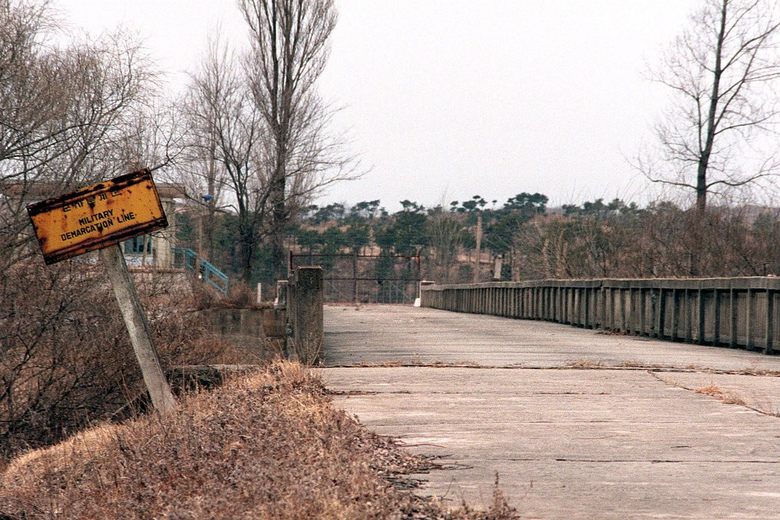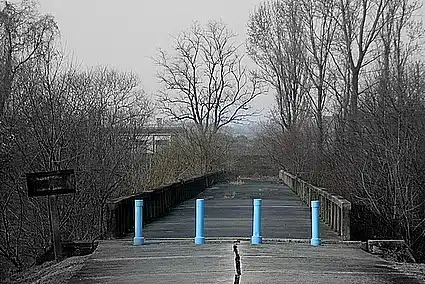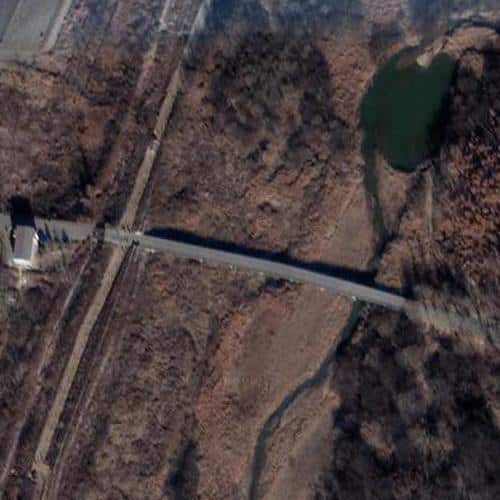Physical Address
304 North Cardinal St.
Dorchester Center, MA 02124
Physical Address
304 North Cardinal St.
Dorchester Center, MA 02124

The Bridge of No Return, located in the Demilitarized Zone (DMZ) between North and South Korea, is a potent symbol of the division and history of the Korean Peninsula. The bridge, which crosses the Military Demarcation Line, is a stark reminder of the tense relationship between the two Koreas and the broader geopolitical tensions of the Cold War era.


The Bridge of No Return was first used for prisoner exchanges at the end of the Korean War in 1953. The name “Bridge of No Return” comes from the ultimatum given to prisoners of war: they could choose to stay in the country where they were held captive or return to their homeland, but once they crossed the bridge, there was no going back.
The first major prisoner exchange, known as Operation Little Switch, took place in April 1953. The United Nations Command (UNC) exchanged 6,030 North Korean prisoners for 605 UNC prisoners, most of whom were sick or wounded. This was followed by Operation Big Switch, where 70,183 North Koreans and 5,640 Chinese POWs were exchanged for 12,773 UNC POWs from various nations, including 7,862 South Koreans, 3,597 Americans, and 945 British.
The Bridge of No Return was also the site of several significant incidents. In 1968, following the capture of the USS Pueblo by DPRK naval forces, the crew was held for 11 months. They were finally released and allowed to walk across the bridge, but only while a forced confession from the captain was broadcast over loudspeakers. This was the last prisoner exchange across the Bridge of No Return.
In August 1976, tensions peaked with fatal consequences during the Korean axe murder incident. Two United States Army officers were killed by North Korean soldiers while trying to trim a poplar tree in the Joint Security Area near the bridge. Following this incident, North Korea built a new bridge, and the Bridge of No Return was never used again for prisoner exchanges.
Despite its disuse, the Bridge of No Return has not faded from relevance. In 1993, President Bill Clinton walked part of the way over the bridge, to within 10 feet of the demarcation line. He was heavily guarded by a Secret Service escort and watched by AK-47-carrying North Korean soldiers on the other side.
In August 2016, the United Nations Command accused the North Korean army of planting land mines near the northern end of the landmark bridge. It was the first time North Korea had been seen planting mines near the bridge since the armistice of 1953.
Today, the bridge is unused and barred by bollards at either end. However, it remains a potent symbol of the fraught history between the two Koreas, and between the United States and the North Korean regime. The bridge is located inside the Joint Security Area of the DMZ, and can be visited—but not crossed—by adventurous tourists.
For those wishing to visit the Bridge of No Return, it is important to note that it is part of an organized, approved tour of the DMZ that includes the Joint Security Area. Not all DMZ tours include the JSA, and tour itineraries are often subject to last-minute changes based on security conditions.
The Bridge of No Return stands as a stark reminder of the division and history of the Korean Peninsula. It is a symbol of the past, a witness to the present, and a beacon for the future, reminding us of the importance of peace and reconciliation.
The Bridge of No Return has also made its way into popular culture. It has been featured in several films and television series, including popular Korean drama series “Crash Landing on You” and the the James Bond film “Die Another Day”. These portrayals have helped to raise awareness about the bridge and its historical significance. Check out the scene in Die Another Day, when Bond is traded for Zao!
Despite its grim history, the Bridge of No Return is a place of interest for many visitors to the Korean Peninsula. It offers a poignant glimpse into the complex history and ongoing tensions between North and South Korea. For those interested in history, geopolitics, or simply looking to understand more about the Korean Peninsula, a visit to the Bridge of No Return is a must.
In conclusion, the Bridge of No Return is a significant historical and symbolic site in the Korean Peninsula. It stands as a stark reminder of the division between North and South Korea and the ongoing tensions that have persisted since the end of the Korean War. As we look towards the future, the Bridge of No Return serves as a reminder of the importance of peace and reconciliation.